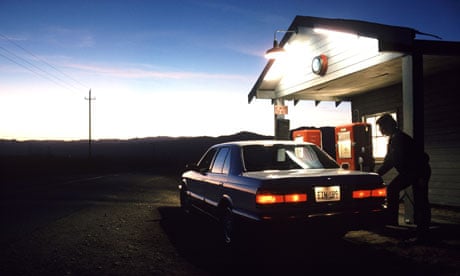America's love of driving is iconic. The open road is a central manifestation of America the free. During the 20th century, the total movement of cars and trucks on our national roads and highways grew as fast as our economy, or faster. Movement – measured by total vehicle miles travelled (VMT) – was considered an unqualified blessing. In the 1960s each American drove about 5,000 miles a year in a car, van, or truck. By 2000 that number was 10,000 miles. Which means we are twice as well off – right?
Wrong. In the early years of the 21st century, something very interesting happened. Individual vehicle travel in America lost its glamour – and its connection to economic growth. In 2003 when VMT was 2.9 trillion miles, US gross domestic product was just under $11tr. In 2011 GDP passed $15tr while total vehicle travel was still about 2.9 trillion miles. In 2011 alone GDP went up 1.5% while VMT went down 1.5%. VMT per capita is receding as well, with each American now travelling less than 9,500 miles annually.
America is not alone. The UK has experienced similar trends, with a 13% drop in annual trips by cars and vans since 1996, and a 4% reduction in annual distance travelled over the same time period. The ratio of vehicle miles travelled to GDP in the core EU 15 states has dropped by more than 10% since 2000.
There are a number of explanations for why VMT is no longer growing at the same rate as GDP. Demand for shopping and business trips has slowed as these activities are increasingly conducted electronically. Internet-based social networks are fast replacing hanging out at the mall as a teenage pastime. Then there is the cost: fewer young people can afford car ownership – the cost of insurance, fuel, and maintenance on even a used car is simply too high.
Transportation policy has been slow to respond to this change in the way we prefer to travel and, at times, actively resists the shift in customer demand for cheaper, cleaner, on-demand travel choices. Forecasters continue to predict 1.6% annual increases in vehicular travel demand as far as the eye can see – and are designing road and highway expansions to match. The Congressional Budget Office still links travel demand (and thus fuel tax revenues) directly to GDP growth. Earlier this year House leaders in Congress tried to strip funding for transit, bicycling, and pedestrian travel from the Highway Trust Fund, causing a backlash within their own ranks that forced them to drop a floor debate on the measure.
In the absence of policy leadership, Americans are taking matters into their own hands. Baby boomers are giving up the suburbs for communities with more travel choices. Younger adults are delaying getting a driver's licence and, when they do, they are not buying cars or using them as much. Instead, they are embracing new forms of "collaborative consumption" – sharing vehicles through car-share and bike-share programmes. New "smart apps" allow users to identify travel options to places they want to go on a real-time basis, then guide them to the nearest available vehicle – whether bus, car, bicycle or train – to get them there.
All age groups appear to be moving toward mixed communities where schools, businesses, residences, and shops are in close proximity – even walking distance.
Failure to recognise this sea-change in travel behaviour leads to massive misallocation of scarce infrastructure capital. If vehicular travel is, as it seems, decoupling from GDP growth, then transportation investments should respond by supporting a much broader array of travel behaviour than driving, including bus, bus rapid transit, shared ride services, cycling and safe pedestrian travel.
America still stands for freedom – but it is no longer just the freedom of the open road. Freedom to multitask while we travel. Freedom to access social networks, buy goods and services, and conduct business without sitting in traffic. Freedom to live in clean, healthy environments. In such a world, planning to accommodate more and more driving when the customer is signalling a desire for new transportation services makes no sense.
The stagnation in VMT growth is an important indicator of how lifestyles are changing in America. It's about time our legislators designed transportation policies that suit our needs in the 21st century.

Comments (…)
Sign in or create your Guardian account to join the discussion